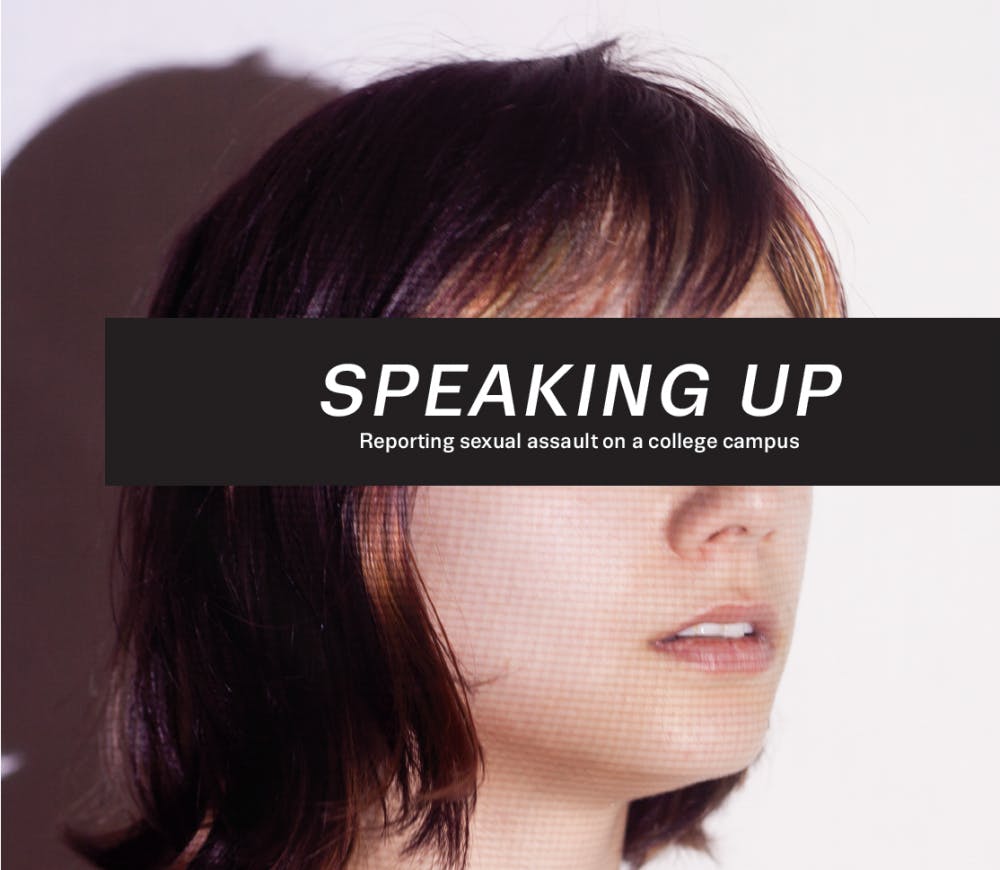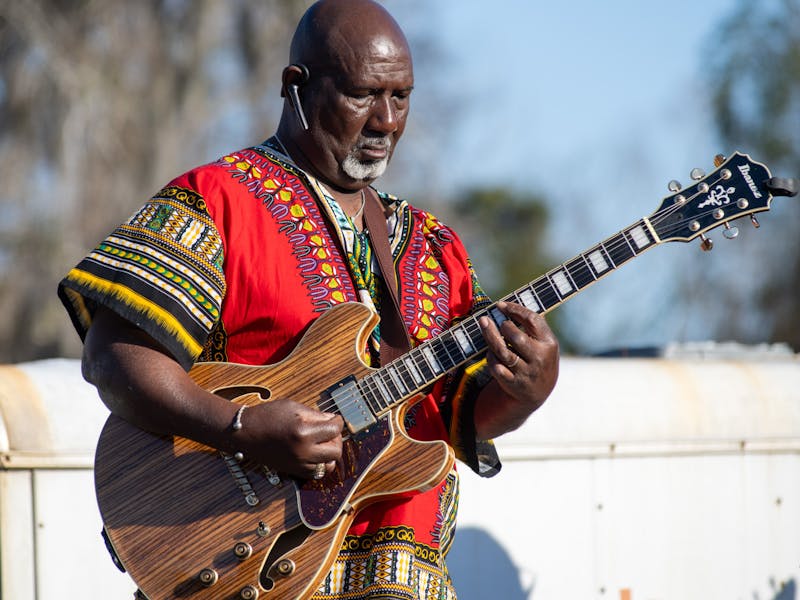There are hundreds of definitions for the terms listed below, but for the purposes of this article, we use these definitions from the U.S. Department of Justice's National Crime Victimization Survey.
Sexual assault: attacks or attempted attacks usually involving unwanted sexual contact between a victim and offender; sexual assault may or may not involve force and includes grabbing or fondling.
CONTACTS
Sexual Assault and Violence Intervention and Prevention
Thomson Student Health Center
1409 Devine Street
803-777-8248
Walk-ins are always accepted
USCPD
803-777-4215 (Police dispatch)
803-777-6472 (Victim services)
Office of Student Conduct
803-777-4333
Counseling and Psychiatry
803-777-5223
Equal Opportunity Programs
803-777-3854
Rape: the unlawful penetration of a person against the will of the victim, with use or threatened use of force, or attempting such an act.
---------------------------------------------------------------------------------
AFTER THE REPORT
Someone in America is sexually assaulted every 107 seconds, and the average college student reads 450 words per minute. By the time you finish this story, the number of victims will have increased by three.
Today, the story isn’t that sexual assault is happening on college campuses — we know it is. Over the last several years, young women’s accounts of attacks and stories about how universities are trying to combat a seemingly endless epidemic have seeped into news cycles across the country.
South Carolina’s statewide rape rate has exceeded the national rate since 1982. This year, USC created a new website with resources to prevent and report sexual assaults. In February, the university sent out a survey to students about sexual assault on campus, the results of which are due back sometime this semester.
But for many, it’s still uncomfortable to talk about and surrounded by questions. What do I do if I was sexually assaulted? Who do I tell? How do I know if it was sexual assault? What happens if I report it? Will I get in trouble?
Where do I start?
THE DEFINITION
Now we have two problems: Sexual assault is still happening, and it’s going unreported. And what sometimes hinders victims from reaching out is trouble defining what the incident was and whether or not it was worth reporting
If you’re looking for a universal definition of sexual assault, you won’t find one. Some are very technical, some are all encompassing and some are really vague. But what it comes down to is how the victim feels
“It becomes sexual assault when the victim feels as though they’ve been victimized,” says Bobby Gist, executive assistant to the president for Equal Opportunity Programs. Gist’s office deals with Title IX cases and investigates sexual assault cases. “When does yes mean yes, when does no mean no — it really doesn’t matter. It’s the victim who decides whether it’s sexual assault."
Most rape definitions include some sort of penetration, whether vaginal or anal, and often a use of force, though force is not necessary for the act to be constituted as rape.
Gist and his office refer to those who have been sexually assaulted as “victims.”
Shannon Nix, associate director of the Sexual Assault and Violence Intervention and Prevention office and her staff refer to those who have been sexually assaulted as “survivors."
Nix says that slight word change helps empower people in a time when they feel most vulnerable and weak.
THE OPTIONS
If you report a sexual assault to SAVIP, it’s confidential. Nix and her team won’t contact law enforcement, call the hospital or tell anyone if you don’t want them to.
From there, you can decide if you want to bring it to the police, who will open up a criminal investigation, collect evidence and conduct interviews. USCPD will alert the Equal Opportunities Office, which will investigate as well. If you need to go to the hospital, a court hearing, a Title IX meeting, someone from SAVIP is available to go with you.
And the assault didn’t have to happen at USC or in Columbia for USC to claim jurisdiction. Gist says his office often works “hand-in-glove” with police departments outside of Columbia to investigate sexual assault cases.
“It doesn’t matter if it’s one of our students and it happens in Miami or if it happens down in Hilton Head or if it happens down in Myrtle Beach,” Gist says. “If it’s one of our students that it happens to, we will find out whether or not that student was referred to the local police department.”
You can also report a sexual assault online, whether you were the victim or a bystander. That report is immediately sent to SAVIP. From there, the user can specify whether or not the victim wants to pursue university action, which will move the report along to USCPD and EOP.
If the assault happened between two students, the Office of Student Conduct can open up an investigation and conduct a hearing. If the offending student is found guilty, this could result in a no contact order or suspension.
University employees, including resident mentors and peer leaders, are obligated to report any instance of sexual assault they hear of from a student they are responsible for. If you mention that you or someone you know was sexually assaulted to a professor, they are legally required to tell the university about it.
Victims can file an anonymous report with police, in which evidence is taken and locked away for a year. This way, if the victim changes their mind and decides to take legal action, they have the evidence.
THE STIGMA
In USC’s 2014 Cleary report, there were 10 reported sexual assaults.
That doesn’t mean there were 10 sexual assaults on campus in 2014 — it means 10 people came forward and reported them, which echoes this December 2014 U.S. Department of Justice report:
“For the period 1995 to 2013, females ages 18 to 24 had the highest rate of rape and sexual assault victimizations compared to females in all other age groups. … Among student victims, 20 percent of rape and sexual assault victimizations were reported to police, compared to 32 percent reported among non-student victims ages 18 to 24.”
Students are less likely to report a sexual assault than nonstudents, even though students have more options when it comes to investigations.
“That’s the biggest problem that we’re having right now. Sometimes, people come in a year or two years later to report it,” Gist says. “And it’s at that point in time that we definitely have to get law enforcement involved. We want these things reported in a timely fashion. It’s become a major issue.”
Nix says the SAVIP office won’t recommend any particular route for victims, aside from counseling, because no two incidents are the same. Some may require immediate medical attention — if the victim wishes to undergo a forensic examination, for example, they’re on a 72-hour timeline.
“We just lay [the options] out and say, ‘Let’s follow up in a couple of days. Take time and think about what you want to do,’” Nix says.
This is one of the most important things Nix says her office does: give the victim a choice. SAVIP will never cold call victims to ask them to come in. The entire process is voluntary. By giving the victim the reins, they have the power to make the next decision.
“Whether it’s sexual assault or relationship violence, all of their power’s been taken away,” Nix says. “It’s the absolute worst way to take anyone’s power away.”
------------------------------------------------------------------------------------------------
THE RED ZONE
It’s mid-August, and campus is flooded with new students, particularly first-year female students rushing in sororities. They’re putting sheets on their beds, hugging their parents goodbye and looking for new friends.
It’s now that they’re at the highest risk for sexual assault.
The first six weeks of the fall semester — between move-in and Thanksgiving — is what experts call the “red zone,” when young women are most susceptible to offenders. New students are in an unfamiliar place, eager to start social lives and vulnerable.
“We’re very close to Five Points,” Nix says. “Alcohol and sexual assault — there’s a correlation there, particularly with college campuses and particularly with ours since we’re close to an entertainment district.”
In the U.S. Department of Justice’s study, 47 percent of female student victims said their offender was under the influence of drugs or alcohol.
More than 49 percent of rape victims in South Carolina in 2012 said their offender was an acquaintance. And when it came to college-aged women nationally, 80 percent of victims knew their offender.
And the beginning of the year isn’t the only red zone. Nix says her team sees an uptick in clients during football season, particularly after home games. The weather is warmer, and her office has prepare themselves for events like St. Patrick's Day and Carolina Cup.
“We know it’s happening,” Nix says. “But more people coming to my office doesn’t mean there are more sexual assaults. It means more people are getting help.”
------------------------------------------------------------------------------------------------
Centers for Disease Control, 2012
There are 18 million female sexual violence survivors
There are 3 million male sexual violence survivors
1 in 5 women have been the victim of attempted or completed rape during their lifetime
1 in 71 men have been victims of attempted or completed rape during their lifetime
Crime in South Carolina, 2013
Number of reported rape offenses in South Carolina
1975: 741
1993: 1,997
2003: 1,921
2012: 1,709
Number of offenses has increased 130.8% between 1975 and 2012
Relationship of rape victims to offenders in SC
Stranger: 10.2%
Intimate: 11.8%
Relationship unknown: 12.4%
Family 16.6%
Acquaintance: 49%
U.S. Senate Subcommittee, 2014
40% of colleges reported not investigating a single sexual assault in the previous five years
70% of colleges did not have a protocol for working with local law enforcement
U.S. Department of Justice, Office of Justice programs Bureau of Justice Statistics, 2014
The annual economic impact of sexual violence is estimated to be $127 billion
Each year there are 300,170 victims of rape and sexual assault in America



